6 Ways To Repel Rodents From Making Your Car’s Engine Their Home
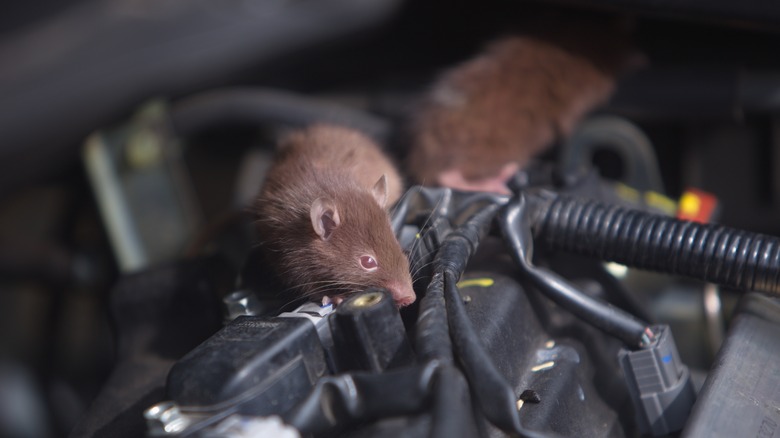
Pests come in all shapes and sizes, but none quite make our skin crawl like rodents — a group of mammals that includes rats, mice, squirrels, and chipmunks, that are characterized by their continuously growing set of teeth that must be regularly worn down by chewing and gnawing. Wherever mankind reigns supreme, you can bet that swarms of these critters are nearby. Having readily adapted to life alongside humans, many rodents can be pests, raiding our homes, farms, and businesses with devastating results. And if you think your car is safe from these mini marauders, think again.
Our vehicles provide the space, comfort, and safety rodents need to nest and breed, especially during the coldest times of year. Rodents can cause extreme damage to your car, as they’ll be chewing on wires and pipes to keep their teeth in check, leading to expensive and potentially life-threatening electrical problems. Likewise, any stored food or nest material gathered can plug up ducts. Worst of all, rodents can carry harmful diseases and pests that will have a damaged engine be the least of your worries.
Ultimately, the best measure to keep your car free of rodents is to stop them from entering in the first place. Thankfully, doing so mainly requires some careful attention and reworking of certain habits. It’s never a bad time to load up on prevention tips, so here are six ways to repel rodents from nesting in your car engine.
Keep your car clean of food and clutter
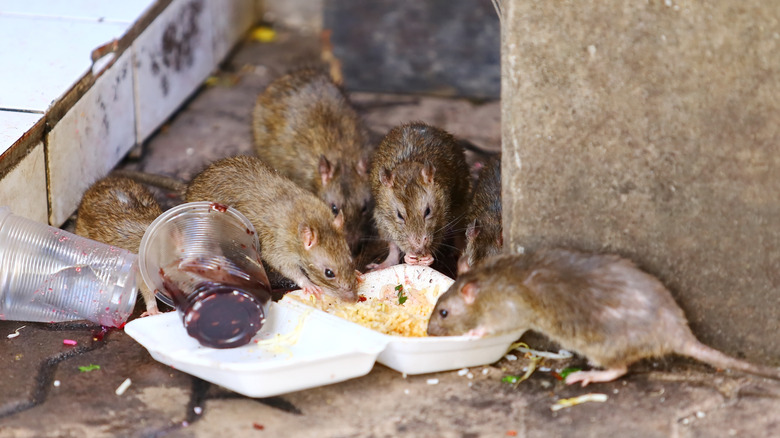
Rats and mice don’t hold cars to the same standards that we do. Whether you’re driving a 20-year-old Honda Accord or the hottest new Tesla doesn’t matter to them. Rather, rodents are attracted to wherever will keep them and their young safest and is close to a constant source of food. Our cars can be just that and then some.
It’s easy for wrappers, containers, bags, and bits of food to accumulate on our seats and floors, and to the sensitive noses of a rodent, it’s practically a dinner bell. Rats and mice are omnivorous, meaning they’ll eat practically anything and everything that we do, but even seemingly inedible items such as paper can be on the menu. So if your car is experiencing a rodent problem, it’s wise to remove your license and registration information as well. Similarly, having a car or trunk full to the brim with junk offers rodents the perfect place to hide and stay warm. In general, if you haven’t checked your car floors in a while for trash, now’s a good time as any to give your vehicle a good sweep.
Better yet, you can make maintaining your car’s cleanliness into a regular habit. When going about regular cleaning activities at home, take the extra time to go into your car and give it a thorough vacuuming. It’s also a good idea to avoid eating or storing food in the car for long periods of time, further avoiding the chance of unnecessary mess.
Park in your garage
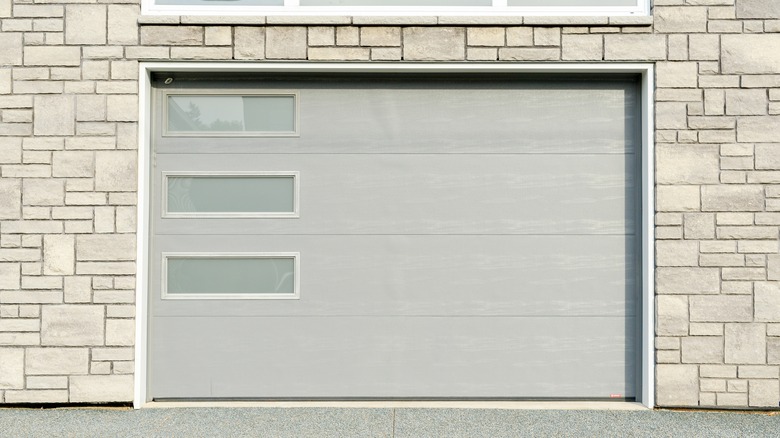
Dolores M. Harvey/Shutterstock
Rodents aren’t going to be able to access your car while it’s in motion. Instead, they lay in wait for your car to be parked before making their way under your hood. Putting a barrier between outside vermin and your parked vehicle will go a long way toward ensuring its safety. The best way to do this is to keep your car parked indoors.
For those with access to one, it’s worthwhile to keep your car safely parked inside a storage area, such as a garage. This keeps your car out of sight and scent of any little critters, but also comes with plenty of other benefits for the car itself. Keeping your car in a garage is a great way to protect it from the elements, especially during the cold months where rain, ice, and snowfall can be especially harsh. Likewise, the various fluids that power your car, such as oil, antifreeze, brake and transmission fluid, can thicken as the weather gets colder, putting your engine at further risk. And the time taken to warm up your car in the morning is also cut down significantly by keeping it in a more controlled environment.
Your garage will do little to safeguard against rodents, however, if it isn’t clean and well-organized. For further protection, ensure your garage isn’t packed with food, is cleaned regularly, and has no openings larger than 5mm that a rodent can squeeze through (more on that later). Of course, not everyone has a garage, which is where our next step comes in.
Be careful where you park
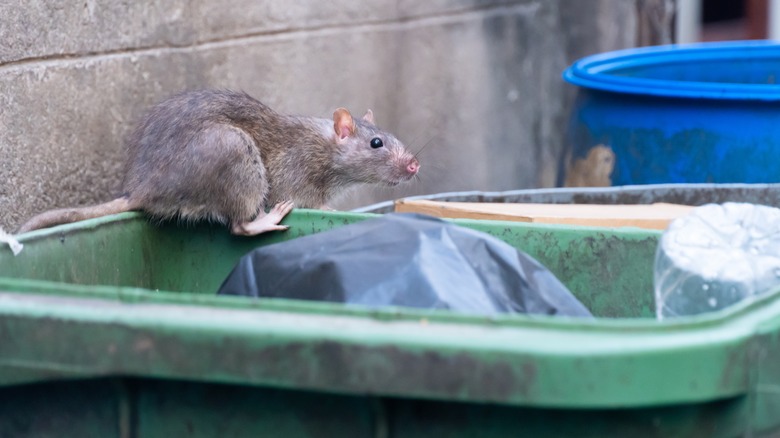
In a perfect world, we would all have a garage to keep our cars in and away from rodents. But that’s not the case, whether you’re living somewhere without one or your garage already has one car too many to fit in yours. Despite this, it’s still entirely possible to keep rodents away from your car, so long as you exercise some extra caution.
Once more, the biggest thing to keep in mind with rodents is that food and hiding places are their biggest attractors. With this in mind, it’s easy to spot areas where you should avoid parking your car nearby. Keep your car as far away from any grassy areas, outdoor trash cans, dumpsters, gardens, pet feeding areas, or food composts. If it’s hard to move your car away from such attractors, see what you can do to move the attractors themselves.
At the end of the day, your goal is to place as much distance as possible between the cozy underside of your car and the common places that rodents may be hanging out. Most rodents typically don’t travel much further than 300 feet from their home to gather food and nesting material. So while a bold rat may not hesitate to run across an empty parking lot to check out your car, it may not take up residency if it has to travel too far to forage.
Keep entrances sealed
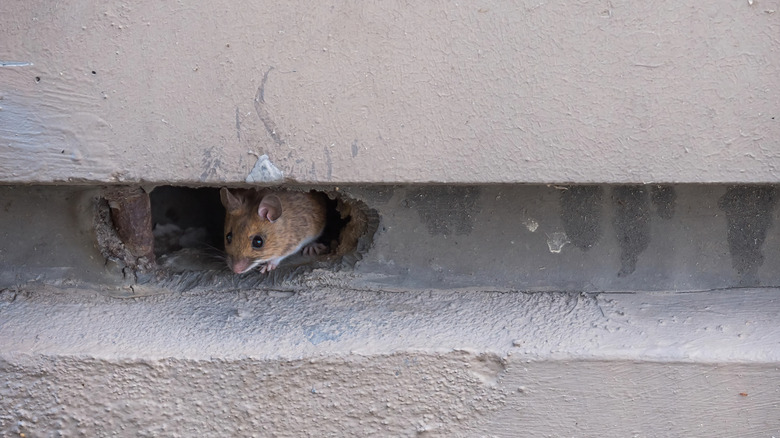
It’s no secret that many rodents, especially the ones that commonly cohabit with humans, are small creatures. But even then, you may be surprised to learn just how capable these critters are at entering spaces unnoticed. Mice, depending on their size and age, can fit through an opening as small as 6mm, which is about the same diameter as an average pencil. And thanks to the powerful teeth of rodents, some of which can chew through wood, plastic, drywall, soft metals, and even cement, it’s not hard for them to make small holes into bigger ones if need be.
So when it comes to keeping them out of your car, we mean it when we say to batten down the hatches. Avoid leaving your doors, windows, or sunroof cracked open at anytime. If your car is inside a garage, be sure to rodent-proof it to the best of your abilities. Thoroughly investigate the garage itself. Is the door closed properly? Are there any holes in the wall or corners you weren’t aware of? Do you have windows that won’t close all the way? Any pipes that connect to the outside world that could provide access? Any and all gaps such as these should be addressed and sealed tightly right away.
Make lots of noise
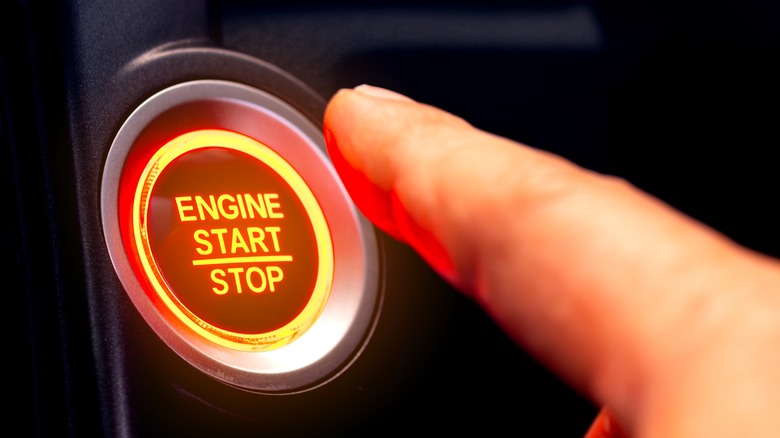
How would you like it if the home you made for yourself was constantly bombarded by a loud, shaking mechanism that moved you from place to place with no warning? After pulling all your hair out, you’d probably be heading for the hills. Rodents aren’t so different when it comes to their living space, which is good to keep in mind if you’re trying to get rid of some pesky pests.
If rodents are taking residency in your ride, you could get into the habit of starting the engine throughout the day. Make it even more unpleasant for them by making loud noises such as honking the horn and loudly playing the radio. Doing this on a frequent basis would be upsetting enough for a person, but even worse for a rat with ultra-sensitive hearing living inside your car.
However, if you have sensitive neighbors or sleeping babies, it’s easy to see where this tactic can have its drawbacks. In such a case, there are quality tools you can invest in that will aid in your dilemma. Numerous repellents exist that can emit irritating ultrasonic, low-frequency sounds that only rodents only can hear.
Use sprays and fragrances

Perhaps the sense that matters more to a rodent than its hearing is its sense of smell. In fact, some studies even suggest that rats can detect the specific smell of tuberculosis and land mines. It was more than likely that same sensitive nose that led them to your car, especially if food was nearby. But that same strong sense of smell can also be used against a rodent if you know what ticks them off.
While there are plenty of rodent-specific products you can find that they will hate to smell, you more than likely have a suitable solution in your cabinet right now. The strong scent from cayenne pepper, peppermint oil, eucalyptus oil, citrus, cedar shavings, strong body soaps, mothballs, and dryer sheets, among many others odors, can help keep rodents at bay. Just be sure to regularly reapply these smells around your car throughout the day to avoid the scent going stale.
If you can pinpoint the areas that rodents are chewing on, there are additional deterrents you can try out. A special rodent tape made by Honda is doped with capsaicin, the active ingredient in chili peppers, and gives your vehicle’s wires an overwhelmingly pungent taste to deter any gnawing rodents. While not always a perfect method, it’s worth using in tandem with other sense-specific tactics to keep rodents away.
10 Ways to Keep Mice and Rats Out of Your Car
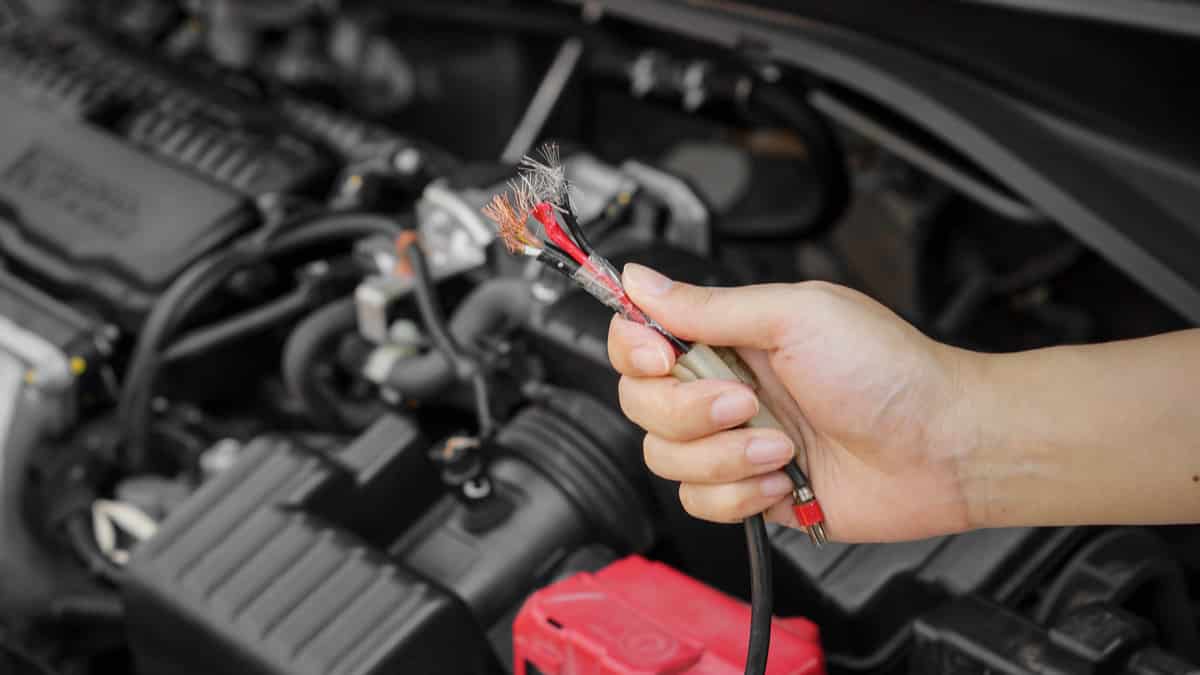
The last thing you want to happen when you take your car out from the garage after a winter-storage is realize that it has been a home for rats or mice during the winter.
As soon as rodents invade your car, they begin to nibble away at the insulation of the car’s electrical wiring. This can lead to short circuits, which can fry control units or other expensive electrical parts.
When they feel comfortable enough in the car, they also use the car’s gaps to store food. Rats and mice hide in small spaces in the engine or cabin of the car, and from there, they begin to breed.
But can you keep them away, and exactly how you can do it? In this article, I will talk about everything you have to know about how to keep mice, rats, and other rodents out of your car.
How to Keep Mice and Rats Out of Your Car
The best way to keep mice and rats away from your car is to leave the doors and hood open. You should also eliminate food sources around the car, and it’s a good idea to move your car regularly. There are also some products you can use to keep them away.
You must understand that the rodents live in your car because it is comfortable for them, so to get rid of them, you need to make it as little comfortable as possible for them.
Here is a more detailed list of 10 ways to keep rats, mice, and other rodents out of your car.
1. Leave the hood open
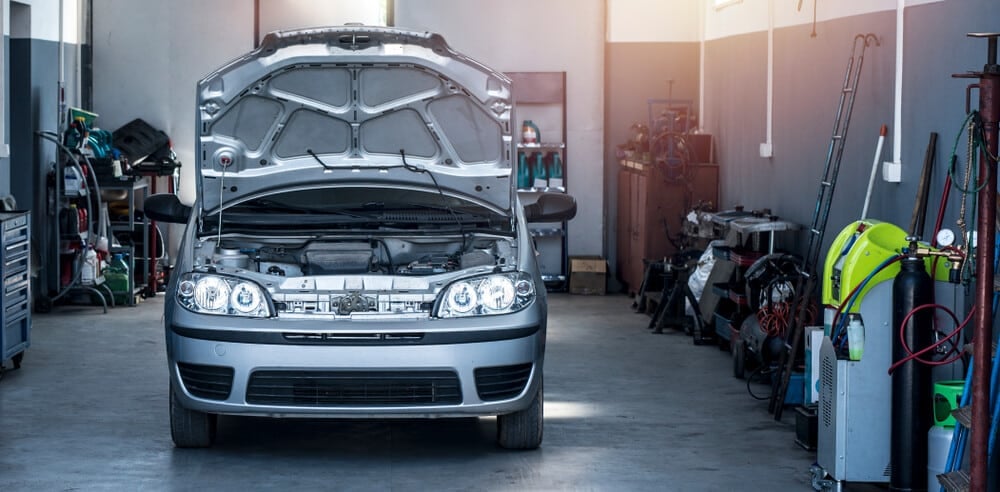
The favorite place for rats or mice to live in is in the engine bay close to the engine. They like to use the engine’s air filters air box as a place to store their food, and they can take the hood’s isolation as material for their house.
One of the easiest ways to make the area under the hood less attractive to them is to let the hood stand open. You can also open the airbox for the air filter if you know how to do it to ensure they will not thrive there. Don’t forget to install it again when you take out your car again, though.
2. Leave doors open
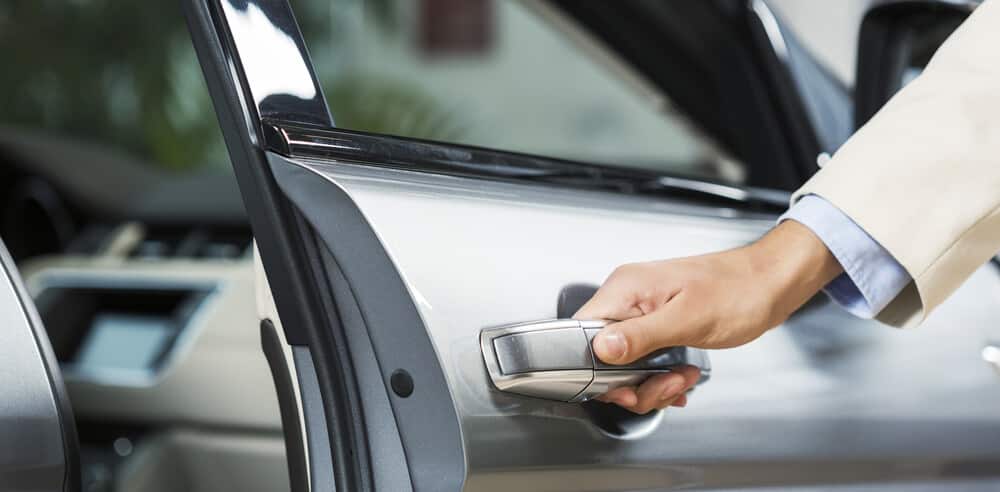
If they are not living under the hood, they will live in the cabin of the car. This is because it is windproof and a protected area for them, which also often holds a good temperature.
Inside the car, there are many places to thrive, so you need to make them not thrive. If your car is protected from water and wind in the garage, you can leave the car doors open to prevent them from living there.
This is by far the most effective method, but you must remember that you can’t do it if there is a risk that it will rain into the car or if you have a garage with high humidity. Only do this if you have your car inside of a protected garage.
3. Eliminate food sources around the car
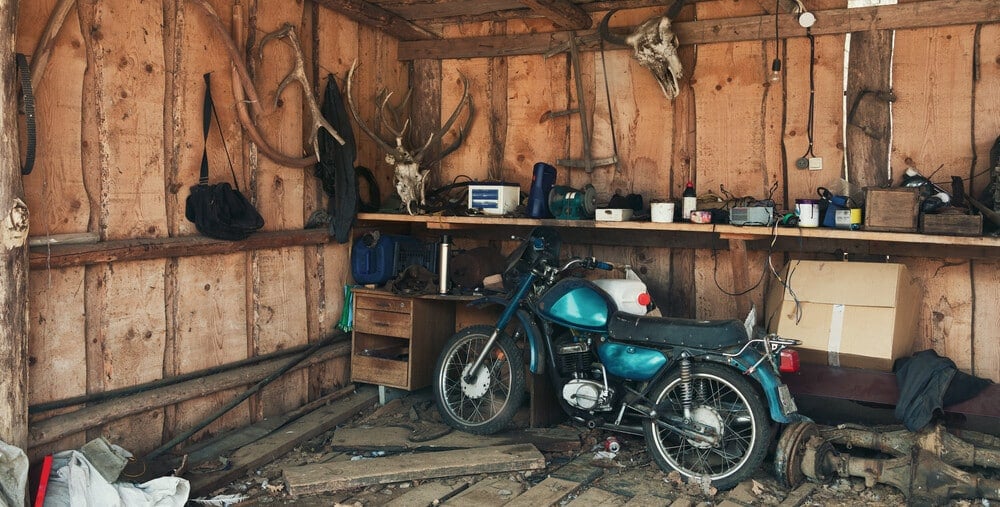
Food droppings attract rodents, and they shouldn’t be in the garage near the car in the first place. It could be a piece of pizza that hasn’t been eaten, cat or dog food, or your favorite candy bar.
If you plan to store your car for a long time, you need to make sure there are no food sources in the garage where your car is standing, because if they are in the garage in the first place, there is a big risk that they will live a better life in the car.
You can also vacuum your car and the garage carefully to remove all food leftovers before you make your car ready for long-term storage.
4. Remove Hiding places around the car
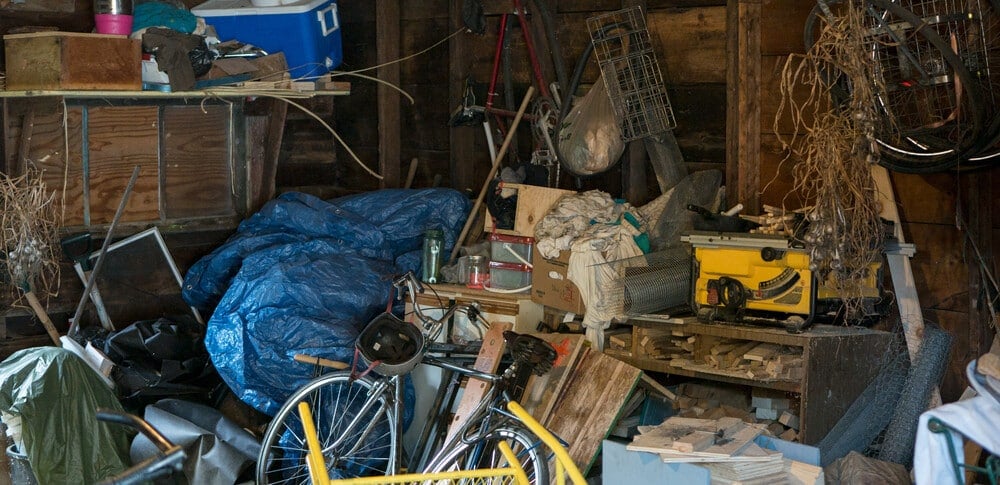
Another good way to keep them away from being near the car in the first place is to hide any hiding places near the car. It can be clothes or trash lying on the floor.
Do not let anything lay on the floor; hang it up instead, if possible, to make sure they will not have any good homes to live in during the storage. Do not put shoes on the floor near the car either, because they will probably like to live in them.
5. Move your car regularly
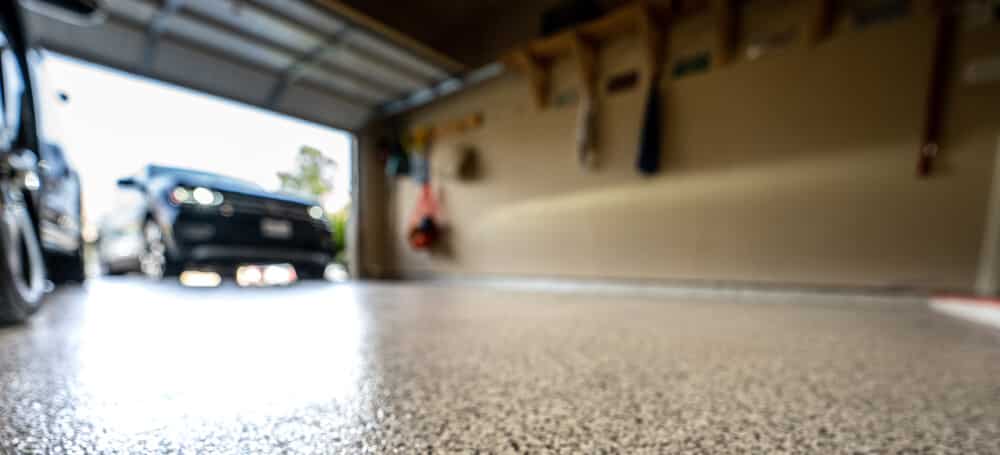
A car that stays parked for weeks or months will have a much higher risk of attracting rodents. If the car has been standing in the exact place for several weeks, the rodents know that no one will disturb their houses.
Move the cars to different positions every month or as often as your can, to make it a little bit lesser chance for them to be comfortable there.
6. Make your car smell bad

There are some repellent products that you can use in your car to keep mice away. Peppermint oil has a strong smell that many people find pleasant, but rodents do not like it. You can soak a cotton ball in peppermint oil and place it strategically where mice hide.
If you do not have peppermint oil, cut Irish spring soap into small pieces and wrap a string around it. You can then hang it in the hood of your car, and it will act as a rodent repellent. Other deterrents are pine sol, cayenne pepper, and self-defense sprays.
You can use many different products, and I do not have any scientific proof that they work, so try it out and check what works for you. You can also do some more research here: Smells that mice and rodents don’t like.
7. Do not store any stuff in the car
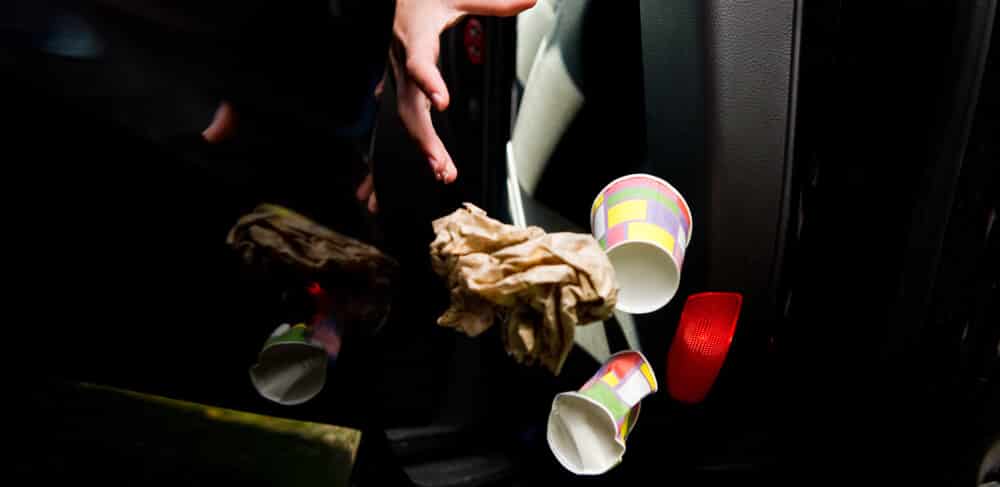
Never store any clothes or other stuff in your car while you have it parked for a long time. By keeping everything in the vehicle organized and clean, you eliminate rodent breeding grounds. Take a bag of your sports clothes and take them out of the car after use.
If you leave your clothes in the car, there is a significant risk that rodents will use the cloth as material for their homes. Your clothes will be destroyed.
8. Block Entry Points
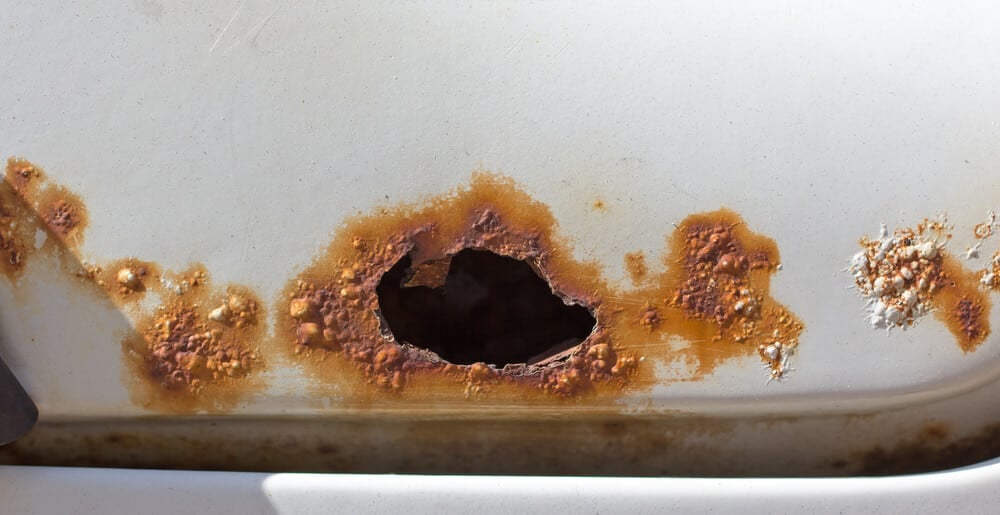
Your car has different entry points for rodents. The way through the cabin air filter into the blower motor is a common way for them to go into the car.
Another way they often come from are the ventilation holes in the trunk. These are there to let the overpressure out that occurs in the cabin when you close a door.
However, if you let the car doors stay open, as I mentioned earlier, there is, of course, no way to block any entry points.
9. Electronic gadgets
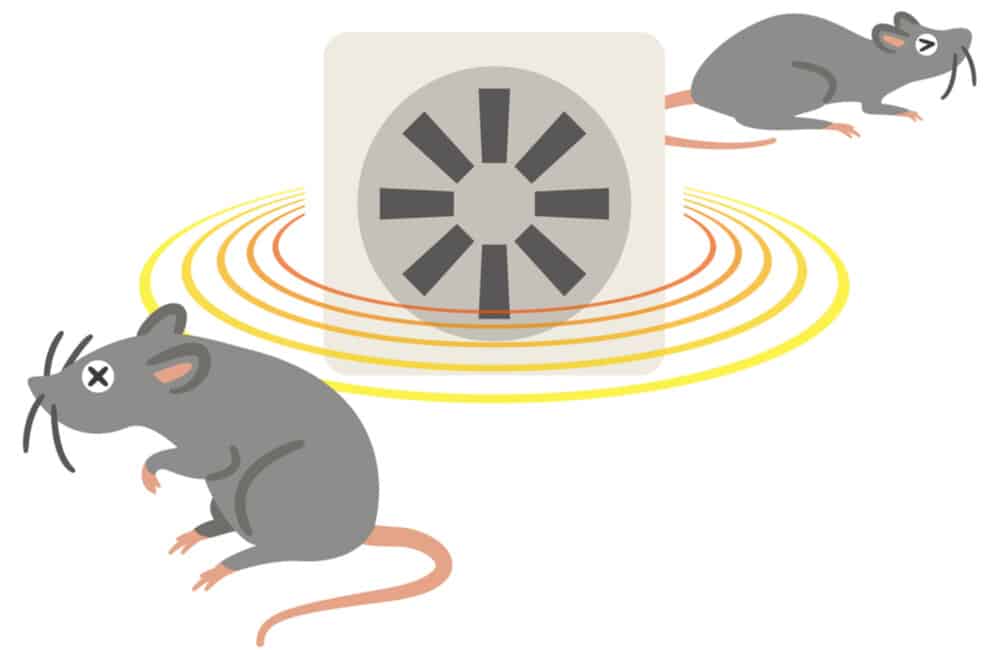
Technological progress has led to the development of electronic products that generate a small ultrasound that keeps rodents away.
The Electronic devices can be connected to the car’s cigarette lighter or the garage’s electricity plug. The sounds generated by the device make the car uninhabitable for rodents, but are not noticeable for humans.
There is a lot of discussions if these devices work or not. However, they are often quite cheap, and it could be worth a try.
10. Mouse Traps

If you already have mice in your car and you want to get rid of them, the only thing to do is to catch them with a mouse or rat trap.
These have been in use for centuries, but their use has been replaced by new biological chemicals that are more effective. If you still like to catch mice the old-fashioned way, you can buy one or two mousetraps. Make sure you place the mousetrap away from the motor and in dark areas where you suspect mice are multiplying.
Be careful when handling the mousetrap, as it can damage your fingers or your pet. You can also choose to use sticky mouse traps. These have a sticky surface that traps mice. Once caught, throw the sticky mice away.
https://www.slashgear.com/1643432/best-rodent-repellent-car-engines-methods-keep-mice-squirrels-away/
https://mechanicbase.com/cars/keep-mice-rats-rodents-out-of-your-car/
